Monomorium santschii is a species of ant that is native to Tunisia. The most famous species in the genus Monomorium is the highly invasive pharaoh ant, Monomorium pharaonis.

The pharaoh ant is a small (2 mm) yellow or light brown, almost transparent ant notorious for being a major indoor nuisance pest, especially in hospitals. A cryptogenic species, it has now been introduced to virtually every area of the world, including Europe, the Americas, Australasia and Southeast Asia. It is a major pest in the United States, Australia, and Europe.
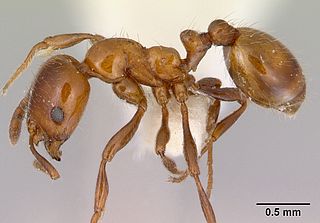
Monomorium antarcticum is an ant of the family Formicidae, endemic to New Zealand. Also known as the southern ant, this is likely New Zealand's most common native ant species. Because it is highly variable in size (3–5mm), colour, and colony structure, it is possible that it consists of a complex of closely related species. It has a generalist diet, including small arthropods, nectar, and seeds, and it also tends aphids, scale insects, and mealybugs to obtain honeydew.
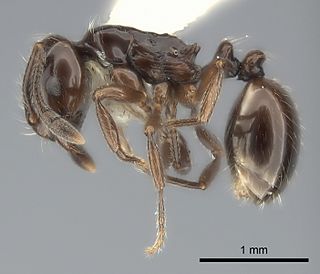
Monomorium bidentatum is a species of ant in the subfamily Myrmicinae. It is endemic to two South American countries, Chile and Argentina.

Monomorium is a genus of ants in the subfamily Myrmicinae. As of 2013 it contains about 396 species. It is distributed around the world, with many species native to the Old World tropics. It is considered to be "one of the more important groups of ants," considering its widespread distribution, its diversity, and its variety of morphological and biological characteristics. It also includes several familiar pest species, such as the pharaoh ant and the flower ant.

Monomorium noualhieri is a species of ant endemic to Algeria.

Trichomyrmex destructor is a species of ant in the subfamily Myrmicinae. Its common names include destructive trailing ant or Singapore ant. It is a pest species in urban areas, known for causing costly damage to structures, vehicles, and electronic devices with its chewing activity. In 2015, the species was moved from the genus Monomorium to the revised genus Trichomyrmex.
Monomorium taprobanae is a species of ant of the subfamily Myrmicinae. It is found in Sri Lanka.

Formica comata is a species of ant in the family Formicidae.

Formica perpilosa is a species of ant in the family Formicidae.
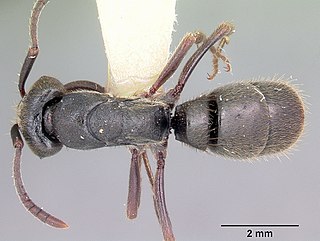
Pachycondyla harpax, the rapacious panther ant, is a species of ant in the family Formicidae.

Pogonomyrmex comanche, the Comanche harvester ant, is a species of ant in the family Formicidae.
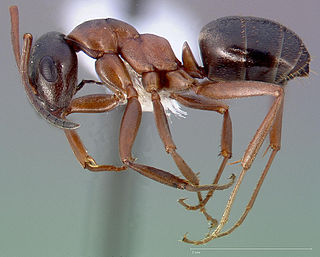
Formica neorufibarbis is a species of ant in the family Formicidae.
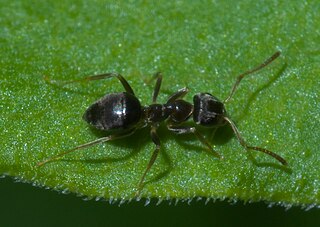
Lasiini is a tribe of ants in the family Formicidae. There are about 10 genera and more than 450 described species in Lasiini.

Hypoponera opacior is a species of ant in the family Formicidae.

Formica integra is a species of ant in the family Formicidae.
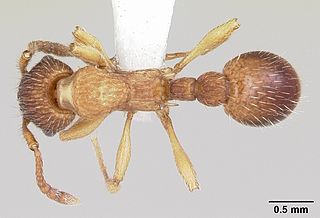
Myrmica pinetorum is a species of ant in the family Formicidae.

Camponotus tortuganus is a species of ant in the family Formicidae.

Monomorium trageri is a species of ant in the family Formicidae.

Monomorium ergatogyna is a species of ant in the family Formicidae. M. ergatogyna species is often mistaken for Monomorium minimum as they are similar in appearance. This ant is a shiny black color and contains only a single worker caste, making them a monomorphic species. It is also polygyne, meaning a colony contains multiple fertile queens living together. They are native to California, Nevada, and Utah and are usually found in cities or on the coast. When compared to other Monomorium species, they are found to have the longest living queens and can live up 2 years in captivity. Argentine ants have been discovered to be actively pushing this species out of its original territory.




















